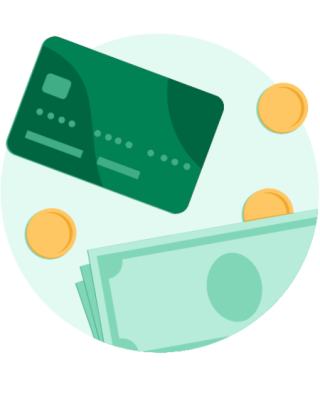Apache is functioning normally

A bear market is defined as a broad market decline of 20% or more from recent highs, which lasts for at least two months. Although bear markets make for dramatic headlines, the truth is that bull markets tend to last much longer — the average bear market typically ends within a year.
While most investors know the difference between a bull and a bear market, it’s important to know some of the characteristics of bear markets in order to understand how different market conditions may impact your portfolio and your investment choices.
What Is a Bear Market?
Investors and market watchers generally define a bear market as a drop of 20% or more from market highs. So when investors refer to a bear market, it usually means that multiple broad market indexes, such as the Standard & Poors 500 Index (S&P 500), Dow Jones Industrial Average (DJIA), and others, fell by 20% or more over at least two months.
To be sure, 20% is a somewhat arbitrary barometer, but it’s a common enough standard throughout the financial world.
The term bear market can also be used to describe a specific security. For example, when a particular stock drops 20% in a short time, it can be said that the stock has entered a bear market.
Bear markets are usually associated with economic recessions, although this isn’t always the case. As economic activity slows, people lose jobs, consumer spending falls, and business earnings decline. As a result, many companies may see their share prices tumble or stagnate as investors pull back.
Why Is It Called a Bear Market?
There are a variety of explanations for why “bear” and “bull” have come to describe specific market conditions. Some say a market slump is like a bear going into hibernation, versus a bull market that keeps charging upward.
The origins of the term bear market may also have come from the so-called bearskin market in the 18th century or earlier. There was a proverb that said it is unwise to sell a bear’s skin before one has caught the bear. Over time the term bearskin, and then bear, became used to describe the selling of assets.
Characteristics of a Bear Market
There are two different types of bear markets:
• Regular bear market or cyclical bear market: The market declines and takes a few months to a year to recover.
• Secular bear market: This type of bear market lasts longer and is driven more by long-term market trends than short-term consumer sentiment. A cyclical bear market can happen within a secular bear market.
History of Bear Markets
The most recent U.S. bear market began in June 2022, largely sparked by rising interest rates and inflation. The bear market officially ended on June 8, 2023, lasting about 248 trading days, according to Dow Jones Market Data, and resulting in a market drop of about 25.4%.
Including the most recent bear market, the S&P 500 Index posted 12 declines of more than 20% since World War II. The table below shows the S&P 500’s returns from the highest point to the lowest point in a downturn. Bear markets average a decline of 34%, and generally last a little more than a year: about 400 days.
Recommended: What Is a Financial Crisis?
Bear markets have occurred as close together as two years and as far apart as nearly 12 years. A secular bear market refers to a longer period of lower-than-average returns; this could last 10 years or more. A secular bear market may include minor rallies, but these don’t take hold.
A cyclical bear market is more likely to last a few weeks to a few months and is more a function of market volatility.
| Peak (Start) | Trough (End) | Return | Length (in days) |
|---|---|---|---|
| May 29, 1946 | May 17, 1947 | -28.78% | 353 |
| June 15, 1948 | June 13, 1949 | -20.57% | 363 |
| August 2, 1956 | October 22, 1957 | -21.63% | 446 |
| December 12, 1961 | June 26, 1962 | -27.97% | 196 |
| February 9, 1966 | October 7, 1966 | -22.18% | 240 |
| November 29, 1968 | May 26, 1970 | -36.06% | 543 |
| January 11, 1973 | October 3, 1974 | -48.20% | 630 |
| November 28, 1980 | August 12, 1982 | -27.11% | 622 |
| August 25, 1987 | December 4, 1987 | -33.51% | 101 |
| March 27, 2000 | Sept. 21, 2001 | -36.77% | 545 |
| Jan. 4, 2002 | Oct. 9, 2002 | -33.75% | 278 |
| October 9, 2007 | Nov. 10, 2008 | -51.93% | 408 |
| Jan. 6, 2009 | March 9, 2009 | -27.62% | 62 |
| February 19, 2020 | March 23, 2020 | -34% | 33 |
| June 2022 | June 8, 2023 | -25% | 248 |
| Average | -34% | 401 |
Source: Seeking Alpha/Dow Jones Market Data as of June 8, 2023.
What Causes a Bear Market?
Usually bear markets are caused by a loss of consumer, investor, and business confidence. Various factors can contribute to the loss of consumer confidence, such as changes to interest rates, global events, falling housing prices, or changes in the economy.
When the market reaches a high, people may feel that certain assets are overvalued. In that instance, people are less likely to buy those assets and more likely to start selling them, which can make prices fall.
When other investors see that prices are falling, they may anticipate that the market has reached a peak and will start declining, so they may also sell off their assets to try and profit on them before the decline. In some cases panic can set in, leading to a mass sell-off and a stock market crash (but this is rare).
Is a Recession the Same as a Bear Market?
No. Bear market conditions can lead to recessions if the market slump lasts long enough. But this isn’t always the case. According to the National Bureau of Economic Research as reported in The New York Times, the U.S. has been in a recession only 14% of the time since World War II.
What Is a Bear Market Rally
Things can get tricky if there is a bear market rally. This happens when the market goes back up for a number of days or weeks, but the rise is only temporary. Investors may think that the market decline has ended and start buying, but it may in fact continue to decline after the rally. Sometimes the market does recover and go back into a bull market, but this is hard to predict.
If the bear market continues on long enough then it becomes a recession, which can go on for months or years. That said, it’s not always the case that a bear market means there will be a recession.
Once asset prices have decreased as much as they possibly can, consumer confidence begins to rise again, and people start buying. This reverses the bear market trend into a bull market, and the market starts to recover and grow again.
Example of a Bear Market
The most recent bear market occurred in June of 2022, when the S&P 500 closed 21.8% lower than its high on Jan. 3, 2022.
While the Nasdaq and the Dow showed a similar pattern in early 2022, the decline of those markets didn’t cross the 20% mark that signals official bear market territory.
Bear Market vs Bull Market
A bull market is essentially the opposite of a bear market. As consumer confidence increases, money goes into the markets and they go up.
A bull market is defined as a 20% rise from the low that the market hit in a bear market. However, the parameters of a bull market are not as clearly defined as they are for a bear market. Once the bottom of the bear market has been reached, people generally feel that a bull market has started.
Investing Tips During a Bear Market
There are a few different bear market investing strategies one can use to both prepare for a bear market and navigate through one.
1. Reduce Risky Investments
When preparing for a bear market, it’s a good idea to reduce riskier holdings such as growth stocks and speculative assets. One can move money into cash, gold, bonds, or other ‘safe’ investments to reduce the risk of losses if the market goes down.
These safe investments tend to perform better than stocks during a bear market. Types of stocks that tend to weather bear markets well include consumer staples and healthcare companies.
2. Diversify
Another investing strategy is diversification. Rather than having all of one’s money in stocks, distribute your investments across asset classes, e.g. precious metals, bonds, crypto, real estate, or other types of investments.
This way, if one type of asset goes down a lot, the others might not go down as much. Similarly, one asset may increase a lot in value, but it’s hard to predict which one, so diversifying increases the chances that one will be exposed to the upward trend, and you’ll see a gain.
3. Save Capital and Reduce Losses
During a bear market, a common strategy is to shift from growing capital into saving it and reducing losses. It may be tempting to try and pick where the market has hit the bottom and start buying growth assets again, but this is very hard to do. It’s safer to invest small amounts of money over time using a dollar-cost averaging strategy so that one’s investments all average out, rather than trying to predict market highs and lows.
4. Find Opportunities for Future Growth
However, in a broad sense if the market is at a high and assets are clearly overvalued, this may not be the best time to buy. And vice versa if assets are clearly undervalued it may be a good time to buy and grow one’s portfolio. A bear market can be a good time to identify assets that might grow in the next bull market and start investing in them.
5. Short Selling
A very risky strategy that some investors take is short selling in anticipation of a bear market. This involves borrowing shares and selling them, then hoping to buy them back at a lower price. It’s risky because there is no guarantee that the price of the shares will fall, and since the shares are borrowed, typically using a margin account, they may end up owing the broker money if their trade doesn’t work out as they hope.
Overall, it’s best to create a long-term investing strategy rather than focusing on short-term trends and making reactive decisions to market changes. It can be scary to watch one’s portfolio go down, especially if it happens fast, but selling off assets because the market is crashing generally doesn’t turn out well for investors.
The Takeaway
Bear markets can be scary times for investors, but even a prolonged drop of 20% or more isn’t likely to last more than a few months, according to historical data. In some cases, bear markets present opportunities to buy stocks at a discount (meaning, when prices are low), in the hope they might rise.
Also there are strategies you can use to reduce losses and prepare for the next bull market, including different types of asset allocation. The point is that whether the markets are considered bearish or bullish, any time can be a good time to invest.
If you’re looking to build a portfolio, no matter what the market, it’s easy when you set up an Active Invest account with SoFi Invest. The secure investing app lets you research, track, buy and sell stocks, ETFs, crypto, and other assets right from your phone or computer. You can easily move between different types of assets and you can set automated recurring investments if you want to put in a certain dollar amount each week or month. All you need is a few dollars to get started.
Start building a portfolio today.
FAQ
How long do bear markets last?
Bear markets may last a few months to a year or more, but most bear markets end within a year’s time. If they go on longer than that they typically become recessions. And while a bear market can end in a few months, it can take longer for the market to regain lost ground.
When was the last bear market?
The most recent bear market started in June of 2022, when the S&P 500 fell from record highs in January for more than two months.
Photo credit: iStock/Morsa Images
SoFi Invest®
The information provided is not meant to provide investment or financial advice. Also, past performance is no guarantee of future results.
Investment decisions should be based on an individual’s specific financial needs, goals, and risk profile. SoFi can’t guarantee future financial performance. Advisory services offered through SoFi Wealth, LLC. SoFi Securities, LLC, member FINRA / SIPC . SoFi Invest refers to the three investment and trading platforms operated by Social Finance, Inc. and its affiliates (described below). Individual customer accounts may be subject to the terms applicable to one or more of the platforms below.
1) Automated Investing—The Automated Investing platform is owned by SoFi Wealth LLC, an SEC registered investment advisor (“Sofi Wealth“). Brokerage services are provided to SoFi Wealth LLC by SoFi Securities LLC, an affiliated SEC registered broker dealer and member FINRA/SIPC, (“Sofi Securities).
2) Active Investing—The Active Investing platform is owned by SoFi Securities LLC. Clearing and custody of all securities are provided by APEX Clearing Corporation.
3) Cryptocurrency is offered by SoFi Digital Assets, LLC, a FinCEN registered Money Service Business.
For additional disclosures related to the SoFi Invest platforms described above, including state licensure of Sofi Digital Assets, LLC, please visit www.sofi.com/legal.
Neither the Investment Advisor Representatives of SoFi Wealth, nor the Registered Representatives of SoFi Securities are compensated for the sale of any product or service sold through any SoFi Invest platform. Information related to lending products contained herein should not be construed as an offer or prequalification for any loan product offered by SoFi Bank, N.A.
Investment Risk: Diversification can help reduce some investment risk. It cannot guarantee profit, or fully protect in a down market.
SOIN0322047
Source: sofi.com







